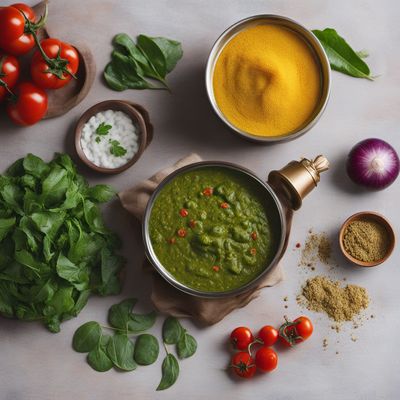
Ingredient
Indian mustards
The Fiery Spice
Indian mustards, also known as Sarson or Rai, are leafy greens with a distinct spicy and pungent flavor. They have a crisp texture and are commonly used in Indian cooking, particularly in dishes like saag (greens) and pickles. Indian mustards are known for their vibrant green color and strong aroma.
Origins and history
Indian mustards have a long history in Indian cuisine and are believed to have originated in the Himalayan region. They have been cultivated for centuries and are an integral part of Indian culinary traditions. Indian mustards are also associated with various cultural and religious festivals in India.
Nutritional information
Indian mustards are low in calories and rich in vitamins A, C, and K. They also contain antioxidants and minerals like calcium and iron. However, they are high in sodium, so individuals on a low-sodium diet should consume them in moderation.
How to select
When selecting Indian mustards, look for fresh, vibrant green leaves that are crisp and free from wilting or yellowing. Avoid leaves that have a slimy texture or a strong, unpleasant odor. It is best to purchase Indian mustards from reputable sources or local farmers markets to ensure freshness and quality.
Storage recommendations
To maintain the freshness of Indian mustards, remove any rubber bands or ties and store them in a plastic bag or airtight container in the refrigerator. They can stay fresh for up to a week. Before using, rinse the leaves thoroughly to remove any dirt or debris.
How to produce
Indian mustards can be easily grown in home gardens or containers. They thrive in well-drained soil and require regular watering. Sow the seeds in early spring or fall, and they will be ready to harvest within a few weeks. Regular pruning will encourage new growth and ensure a continuous supply of fresh leaves.
Preparation tips
Indian mustards can be used in a variety of ways in Indian cuisine. They can be sautéed with spices and served as a side dish, added to curries, or used as a base for chutneys and pickles. Indian mustards can also be used raw in salads or blended into smoothies for an added kick of flavor.
Substitutions
Spinach or kale can be used as substitutes for Indian mustards, although they will not provide the exact same flavor profile. Spinach has a milder taste, while kale has a slightly bitter flavor. Adjust the seasoning accordingly when using substitutions.
Culinary uses
Indian mustards are commonly used in Indian cuisine to add a spicy and pungent flavor to dishes like saag, curries, pickles, and chutneys. They are also used in religious and cultural festivals such as Makar Sankranti and Baisakhi. Indian mustards are a staple ingredient in many regional Indian cuisines.
Availability
India

